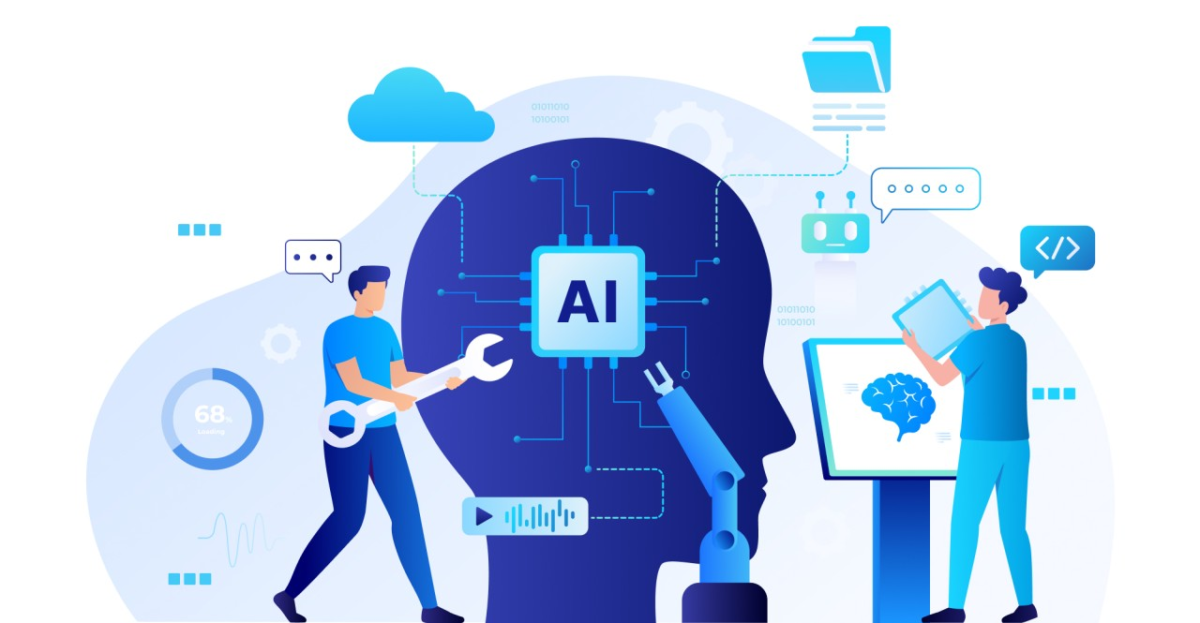
AI in Social Media Marketing: Engaging Audiences Like Never Before
November 7, 2024
The AI Marketing Playbook: Essential Strategies for 2024
November 8, 2024Introduction to Affordable AI Marketing
The digital marketing landscape has rapidly evolved over the past few years, and artificial intelligence (AI) is one of the primary drivers of this transformation. Traditionally associated with large corporations with vast budgets, AI tools are now accessible and affordable, even for small to mid-sized businesses. This development is a game-changer because it means that even smaller brands can leverage powerful technologies to reach, engage, and retain customers more effectively.
Purpose of AI in Marketing
The primary role of AI in marketing is to enhance efficiency and streamline processes. AI allows businesses to automate repetitive tasks, analyze huge volumes of data, and personalize customer interactions. By doing so, it improves both the customer experience and operational efficiency. With AI, marketing tasks that previously required significant human labor—such as segmenting customer data, scheduling posts, or even creating content—can now be handled more quickly and accurately.
AI also brings a data-driven approach to marketing. AI algorithms can rapidly analyze customer behavior, identify trends, and even predict future actions, enabling marketers to tailor their strategies accordingly. For small and medium-sized businesses, this ability to make data-backed decisions without an entire team of analysts is invaluable. It allows them to operate with the sophistication of much larger companies without needing the same level of resources.
Benefits of Affordable AI for Small to Mid-Sized Businesses
AI offers several tangible benefits for businesses with limited marketing budgets:
- Cost Savings: Affordable AI tools reduce the need for large teams, enabling companies to accomplish more with fewer resources. Automation of tasks like customer support or content scheduling cuts down on labor costs, freeing up funds for other marketing initiatives.
- Personalized Customer Experiences: With AI, businesses can deliver tailored content to individual customers, enhancing engagement. For example, AI-powered recommendations on websites or personalized email campaigns based on customer behavior can lead to higher conversion rates.
- Efficiency and Speed: AI-powered tools can handle a large volume of tasks in seconds, increasing overall marketing speed. AI doesn’t get tired or require breaks, making it possible to accomplish more within a shorter timeframe.
Goal of the Guide
This guide will provide a step-by-step approach to implementing AI tools affordably in your marketing. The focus will be on cost-effective strategies that require minimal upfront investment, making this an ideal starting point for small businesses. By the end, you’ll have a clear understanding of how to assess your marketing needs, choose the right tools, and gradually implement AI to maximize impact.

Assessing Your Marketing Needs and Setting Goals
To effectively use AI in marketing, it’s essential to start with a clear understanding of your current processes and goals. AI is not a magic solution for all challenges; rather, it’s a tool that can amplify specific parts of your strategy. Identifying the areas in which AI can add the most value requires a structured assessment of your existing setup.
Evaluate Current Marketing Processes
Begin by examining your current marketing workflows. Look at each aspect individually—content creation, social media engagement, customer support, and email marketing—and ask yourself where the most time and resources are going. Common challenges that many small businesses face include:
- Lead Generation: This can be both time-consuming and costly if done manually.
- Social Media Management: Keeping up with regular posts, engaging with followers, and tracking analytics often requires significant time.
- Customer Support: Answering questions, handling inquiries, and resolving issues can be overwhelming as customer bases grow.
- Email Marketing: Personalized email marketing campaigns can be labor-intensive, especially when segmenting audiences and creating targeted messages.
This assessment will provide a clear view of which areas of your marketing are costing you the most in terms of time and money, helping you to prioritize.
Define Marketing Objectives
Your marketing objectives should be specific, measurable, achievable, relevant, and time-bound (SMART). For instance, your goals might include increasing engagement by 20% over the next quarter, improving conversion rates on your website, or reducing customer acquisition costs by a certain percentage. Clear goals will make it easier to select the appropriate AI tools and evaluate their effectiveness down the line.
Examples of objectives AI can help with include:
- Increasing Social Media Engagement: AI tools for social media can analyze the best times to post, suggest popular hashtags, and even automate responses.
- Boosting Conversion Rates: AI allows for A/B testing, where multiple versions of content are tested to see what resonates most with your audience.
- Reducing Customer Acquisition Costs: With AI-powered targeting, you can focus on the most promising leads, improving efficiency and lowering costs.
Identify Areas Where AI Can Help
With your objectives in place, consider which areas of your strategy could benefit from automation, predictive analytics, or personalization through AI. Some examples include:
- Content Creation: Tools like ChatGPT and Jasper AI can generate blog posts, social media captions, and emails, reducing the time spent on drafting content.
- Social Media Scheduling: AI tools like Hootsuite and Buffer allow you to schedule posts in advance, saving time and ensuring consistent engagement.
- Customer Service: AI chatbots can handle common customer inquiries 24/7, ensuring prompt responses without extra staffing.
- Email Marketing Automation: AI platforms can automate email campaigns, creating personalized messaging for different audience segments.
By knowing your goals and identifying where AI can best assist, you’ll be well-prepared for the next steps in your AI marketing journey.
Understanding Key AI Marketing Tools and Their Affordability
AI is no longer confined to big corporations with vast budgets. Many AI tools are now accessible to small and mid-sized businesses, with options that are affordable or even free. Here’s a rundown of popular tools and categories to help you navigate your choices.
Overview of Cost-Effective AI Marketing Tools
There are numerous AI tools available today that can assist with a variety of marketing tasks. Below are some popular tools across different marketing functions:
- ChatGPT: This tool is great for generating content like blog posts, social media updates, and email drafts. With minimal input, it produces high-quality text, saving significant time.
- Jasper AI: Known for its versatility in content creation, Jasper AI can help you craft engaging blog posts, social media copy, and marketing emails that align with your brand’s tone.
- Canva: Canva’s AI-powered design tools are perfect for creating social media visuals, presentations, and other visual assets quickly, making professional-looking designs accessible to everyone.
- Hootsuite and Buffer: These platforms allow you to manage social media accounts, schedule posts, and track analytics across multiple platforms, all from a single dashboard.
- ManyChat and Drift: Affordable chatbot options for customer support. They allow businesses to interact with customers in real-time, answer questions, and even facilitate transactions.
Tool Categories
The AI tools available generally fall into several categories, each designed to address specific aspects of marketing:
- Content Creation: Tools like ChatGPT and Jasper AI are ideal for generating blog posts, social media captions, and email content.
- Social Media Management: Tools such as Hootsuite and Buffer simplify social media scheduling and offer analytics to track performance, helping you streamline your social media strategy.
- Customer Support: Chatbots like ManyChat and Drift can handle customer inquiries around the clock, freeing up staff for more complex tasks.
- Email Marketing Automation: Tools like Mailchimp and ActiveCampaign use AI to create personalized and automated email campaigns that boost engagement.
Free vs. Paid AI Solutions
Many AI tools offer both free and paid options, making it easier for businesses to try them out before committing to a subscription. The free versions often provide basic features, which can be sufficient for smaller campaigns or companies just starting with AI. As your needs grow, you may consider upgrading to paid versions, which typically offer more advanced features, greater customization, and higher scalability.
Starting with free or low-cost versions can help you evaluate the tool’s value without a big upfront investment. This approach also allows you to gradually add more functionality as your marketing needs expand and your budget increases.

Step-by-Step Implementation of AI in Marketing
Implementing AI into your marketing strategy can seem overwhelming, but by breaking it down into manageable steps, you’ll find it’s achievable and even exciting. Here’s a step-by-step approach to making AI work for your business.
Step 1: Select the Right AI Tool for Each Task
The first step in bringing AI into your marketing is to match the right tool to the task. Start by revisiting the marketing needs and goals you identified earlier and consider the available tools based on each requirement. For instance, if content creation is one of your primary needs, look into options like ChatGPT or Jasper AI. If you need to streamline social media scheduling, Hootsuite or Buffer might be ideal.
Each tool has unique features that cater to different functions, so focus on the essentials. For content creation tools, check for templates, language capabilities, and customization options. For customer service, see if the tool integrates well with your existing platforms, such as your website or social media pages.
Key Features to Look For: Make sure the tool aligns with your brand’s tone and style. Check if it has scalability (in case you need to increase usage as your business grows) and if it integrates smoothly with existing software. Prioritizing these features ensures a smoother setup and more immediate results.
Step 2: Set Up and Integrate AI Tools
Once you’ve selected your tools, the next step is setting them up within your existing systems. Many AI tools offer easy integration with platforms like CMSs (Content Management Systems), CRMs (Customer Relationship Management) software, and social media accounts. For instance, tools like HubSpot and Mailchimp offer API integrations, allowing seamless data sharing and streamlined workflows.
Be sure to sync AI tools with your analytics and customer databases. This connection enables a more comprehensive view of your customer interactions and provides data to fine-tune your AI tool’s performance. For example, integrating an AI email tool with your CRM can help you personalize email content based on past customer behavior, increasing the chances of engagement.
Tip: Don’t rush this step. Take the time to test each integration carefully. Use the tool’s support or helpdesk if needed, and make sure all systems are synced correctly to avoid glitches down the line.
Step 3: Train AI Tools to Align with Your Brand
AI tools learn from the data they’re provided, which means you can train them to reflect your brand’s tone and style. Content generation tools, in particular, allow you to create prompts or templates that convey your unique voice and messaging. For example, if your brand tone is friendly and conversational, set up prompts that encourage this tone.
Consider creating a “brand guide” for your AI tools. This could include preferred keywords, tone of voice, and style guidelines. If you use chatbots, program them to use greetings or phrases that align with your brand’s character. This process will ensure that the AI-generated content or responses feel cohesive and in line with your brand’s identity.
Step 4: Test and Monitor AI Performance
After setting up, it’s essential to test and monitor the AI’s output. Establish KPIs (Key Performance Indicators) like engagement rates, lead conversion rates, and customer satisfaction to measure the effectiveness of AI-generated content. Testing can be done through A/B testing where you compare AI-generated content to traditional content, giving insight into what resonates most with your audience.
Monitoring allows you to spot patterns and areas for improvement. For instance, if you notice that AI-generated emails perform better at a certain time of day, you can adjust your email schedule accordingly.
Step 5: Optimize and Scale Up
As you become comfortable with AI and see positive results, consider scaling up your efforts. Use the data from AI-driven analytics to refine and optimize your strategy further. This might mean using AI in new areas, such as expanding into video marketing, or increasing the scope of your current tools to handle larger volumes of work.
Optimization is a continuous process, so keep monitoring and adjusting your AI strategies. Small adjustments, such as refining email subject lines or improving chatbot scripts, can lead to incremental gains over time, resulting in significant overall growth.

Tips for Managing Costs and Maximizing ROI with AI
While affordable AI tools can offer substantial benefits, it’s essential to manage costs effectively and focus on maximizing return on investment (ROI). Here are some strategies to help you get the most value from your AI investment.
Focus on High-Impact, Low-Cost Strategies
When using AI on a budget, prioritize high-impact areas where AI can add the most value. For many small businesses, these areas include customer support, social media management, and email marketing. By focusing on these aspects, you can achieve quick wins and reduce the need for extensive manual work, freeing up time and resources.
For instance, if customer service is taking up too much time, invest in an AI chatbot that can answer FAQs and handle basic inquiries. This approach is cost-effective and has an immediate impact on customer satisfaction.
Use Free Trials and Freemium Versions First
Many AI tools offer free trials or freemium versions with basic features. Use these options to test whether a tool meets your needs before committing to a paid plan. This is especially useful if you’re trying out a new category of tools, like AI-powered email marketing or chatbot software, for the first time.
Freemium versions often provide enough functionality for smaller businesses. For example, Canva’s free tier offers design tools, and Hootsuite allows basic social media scheduling. These options let you explore the tools’ value without a financial commitment, making it easier to determine if an upgrade is worth the cost.
Regularly Review and Reassess
Technology and AI tools are constantly evolving, so it’s wise to review your AI tools periodically. Every few months, evaluate the effectiveness of the tools you’re using, and assess whether you’re getting a good return on investment. Some tools may become redundant or less useful as your business or customer base grows, while newer, more affordable options may appear on the market.
For example, if you’re using an AI content generator that doesn’t align with your brand’s tone or style anymore, consider switching to a newer tool that’s a better fit. This continual reassessment ensures that your AI strategy remains aligned with your goals.
Optimize AI Usage Across Channels
Once you’ve established which AI tools work best for your needs, try to maximize their usage across all your marketing channels. A content creation tool, for instance, can be used for blog posts, email marketing, and social media content. This cross-channel usage maximizes the value of your subscription and increases overall efficiency.
By strategically managing costs and continually optimizing your approach, you can maximize the ROI of your AI marketing efforts. Small adjustments, like sticking to free trials, using freemium versions, and reviewing tool effectiveness, will keep your budget under control while still driving significant value.

Overcoming Common Challenges in Affordable AI Marketing
While AI offers many benefits, integrating affordable AI into your marketing strategy isn’t always smooth sailing. Businesses often face challenges around tool limitations, data privacy, and maintaining a human touch. Let’s look at these challenges and explore ways to address them effectively.
Addressing AI Tool Limitations
Budget-friendly AI tools are powerful, but they may not always offer the level of customization or sophistication that premium tools do. For instance, a free or low-cost AI chatbot might handle basic customer queries but struggle with more complex questions. Similarly, an affordable AI content generator may lack advanced personalization features, producing content that feels generic.
To address these limitations, focus on using budget AI tools in simpler, high-impact tasks. For example, if your AI chatbot can only answer FAQs, use it to handle these basic questions and route complex queries to a human team member. This approach ensures your customers receive support while saving your team time on repetitive tasks.
Tip: For content creation, start with AI-generated drafts and have a human editor refine them. This “AI-human hybrid” approach leverages the efficiency of AI while ensuring the final output aligns with your brand’s standards.
Ensuring Data Privacy and Security
AI tools often interact with sensitive customer information, especially in customer support and email marketing. Budget-friendly AI tools may not always offer robust data privacy and security features, making it crucial to carefully vet each tool before using it.
Best Practices for Data Security:
- Choose reputable tools: Select tools from companies with a solid reputation for data security. Research reviews, user testimonials, and the provider’s security policies.
- Check compliance: Make sure the tool complies with data protection regulations, such as GDPR (General Data Protection Regulation) or CCPA (California Consumer Privacy Act), depending on your location and customer base.
- Limit data access: Only share necessary customer information with the AI tool. For instance, if the tool only needs email addresses, avoid sharing other personal data.
Prioritizing security doesn’t just protect your customers but also strengthens trust, ensuring your AI marketing efforts enhance customer loyalty rather than risking it.
Maintaining a Human Touch
One common concern with AI marketing is that it can make interactions feel impersonal. AI-generated content or automated responses sometimes come across as robotic, which may hinder customer engagement, especially if your brand is known for its personal, friendly touch.
To keep your marketing authentic, use AI to complement human interaction rather than replace it. For instance, allow your chatbot to handle routine queries, but route any emotional or complex issues to a real person. In content marketing, use AI to generate ideas or outlines, but let a human review and polish the final draft to ensure it has the warmth and personality that resonates with your audience.
Tip: Add a touch of personality to AI responses. If you’re using an AI chatbot, program it with friendly, conversational phrases that match your brand’s tone. Many tools allow you to customize greetings, thank-you messages, and other responses, so take advantage of these options.
By proactively addressing these challenges, you can integrate affordable AI tools while maintaining your brand’s authenticity and ensuring customer data remains secure.

Conclusion and Next Steps
Affordable AI marketing has opened doors for small and medium-sized businesses, making sophisticated technology accessible without needing a huge budget. By streamlining tasks like content creation, social media management, and customer support, AI offers opportunities to save time and costs while enhancing customer engagement.
This guide has shown how to evaluate your marketing needs, select appropriate tools, integrate AI into existing systems, and monitor its performance. From assessing tools like ChatGPT for content creation to using Canva for visuals or ManyChat for customer support, affordable AI options are varied and effective when used strategically.
Summary of Benefits
Using affordable AI tools allows businesses to:
- Automate repetitive tasks: Saving time and reducing the need for additional staff.
- Increase customer engagement: Personalizing communication and quickly responding to customer needs.
- Improve data-driven decision-making: Leveraging AI analytics to identify what works and refine marketing strategies.
These benefits aren’t limited to large enterprises. With careful selection and implementation, small businesses can leverage AI to increase competitiveness, reach broader audiences, and streamline operations. The key lies in starting small, focusing on high-impact areas, and refining your strategy based on real-time results.
Encourage Small Steps
Embarking on the AI journey doesn’t have to be overwhelming. Start with just one or two key tools that address pressing needs in your business. As you grow more comfortable with AI and begin seeing positive results, you can consider expanding your AI toolkit or scaling up its applications across other aspects of your marketing.
By taking small steps and continuously learning and adapting, you’ll gradually build a robust, AI-enhanced marketing strategy that drives sustainable growth without the high costs associated with traditional marketing methods.
Looking Ahead
AI in marketing is evolving quickly, with new, affordable options continually emerging. Staying updated on these developments can help your business stay ahead and discover fresh opportunities for growth. Subscribe to industry newsletters, follow AI tool providers, and explore resources like online courses to keep expanding your knowledge.
Ultimately, affordable AI marketing is more than a trend; it’s a transformative approach that empowers businesses to work smarter, compete better, and reach their goals more efficiently.
Share your insights, successes, or challenges in the comments below. Let’s build a community of knowledge and support as we navigate the exciting world of AI marketing together.
Resources for Further Learning:
- Free Trials: Start exploring some of the tools mentioned, like Jasper AI, Canva, and Hootsuite, with their free trial versions.
- Online Courses: Check out courses on platforms like Coursera or Udemy that offer affordable training on AI in marketing.
- Newsletters and Blogs: Follow industry blogs to stay informed about the latest AI marketing trends and tools.
Ready to take the plunge into AI-powered marketing? With the strategies outlined in this guide, you’re equipped to start implementing AI in an affordable, impactful way.


